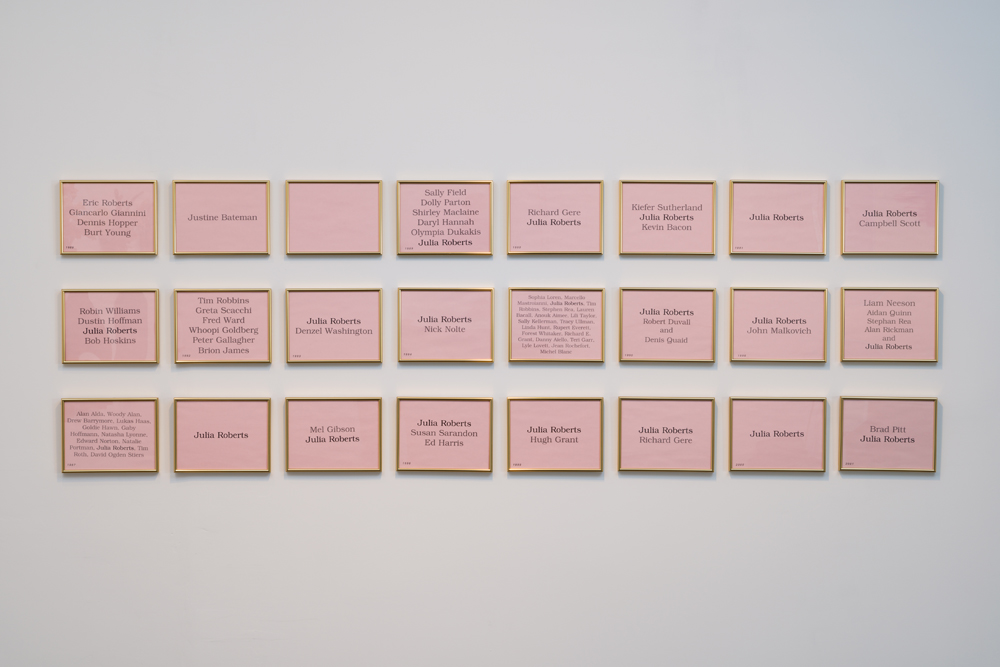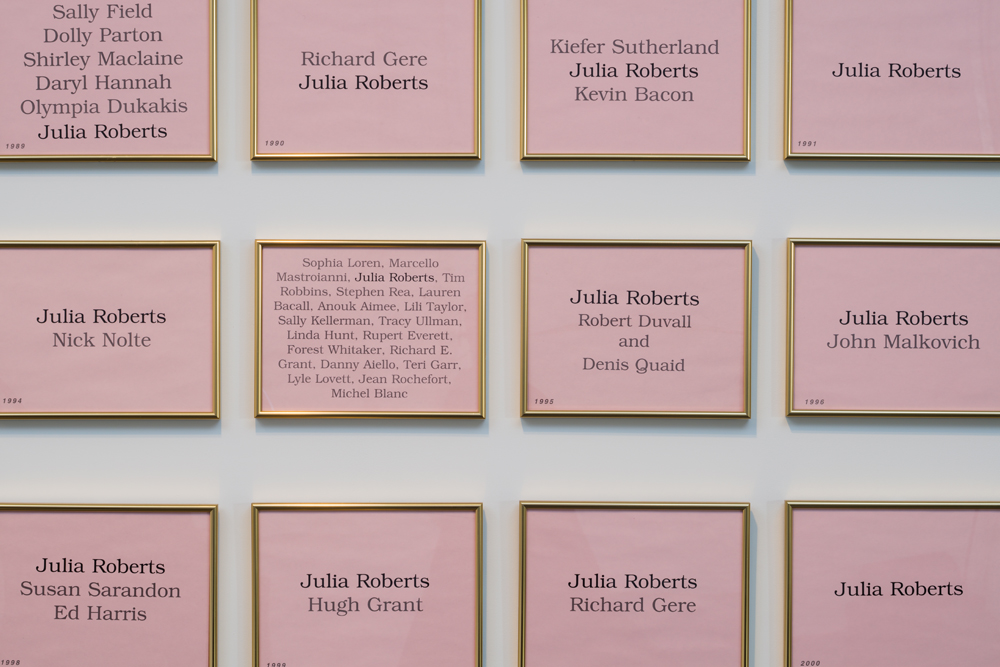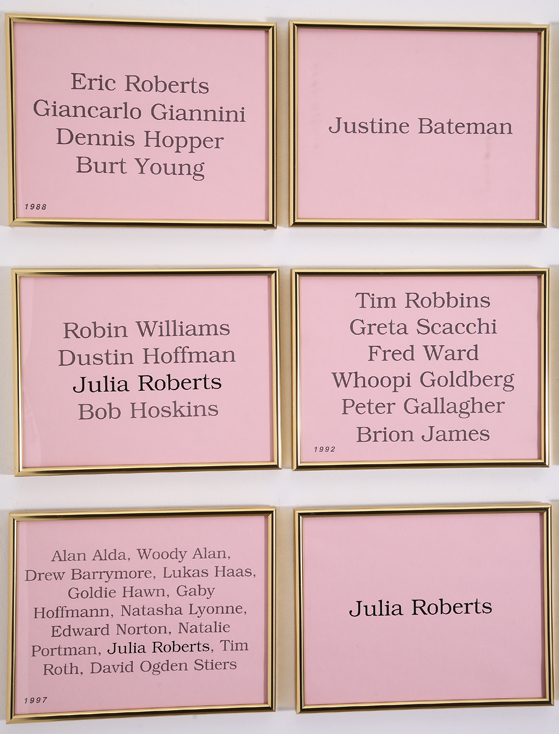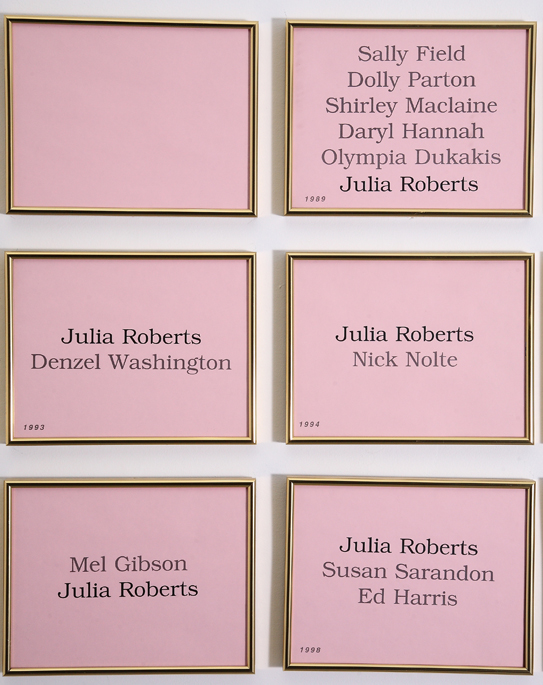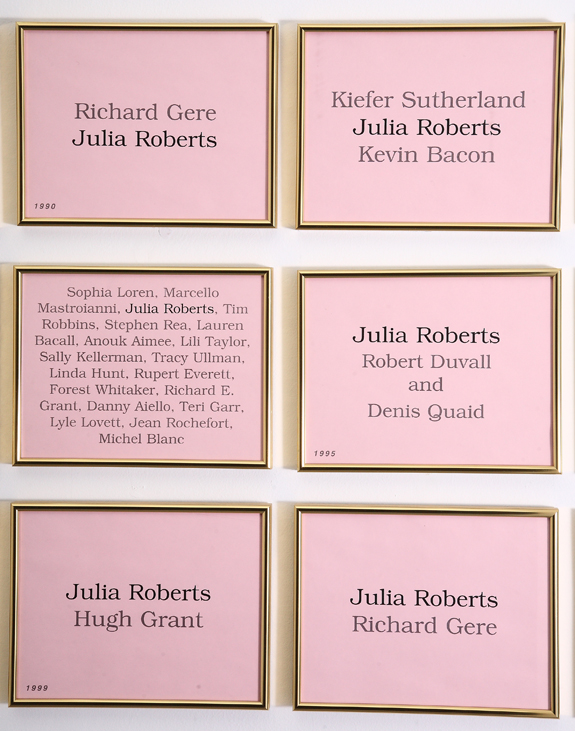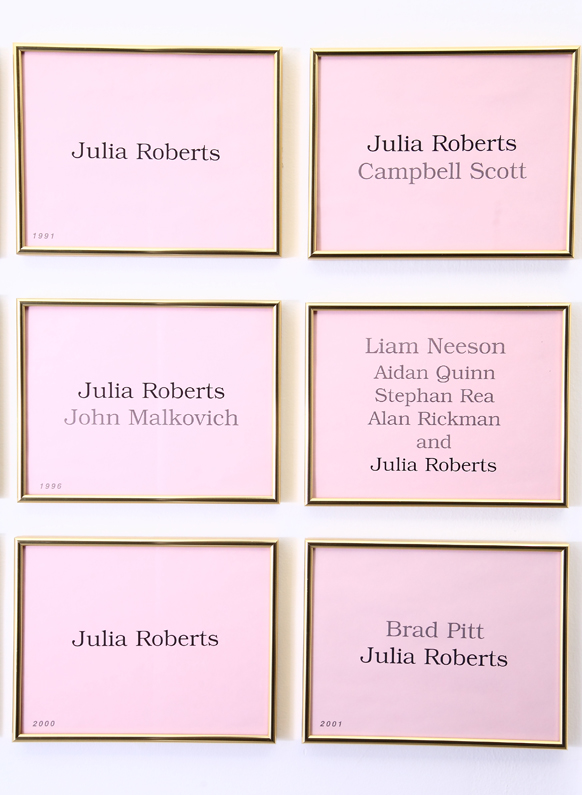Jonathan Horowitz
- Artist Statement
- Curator Statement
- zingmagazine project
- Website
Artist Statement
Best Actress presents a chronology of billings for all of Julia Roberts’ movies up until 2001, the year that the piece was made. The piece charts the rise of Roberts’ celebrity as she literally goes from the bottom to the top. The order in which the actors’ names appear before the title of the movie always reflects a determined hierarchy which is contractually stipulated. Usually, when a movie stars an actor and an actress of equal stature, the actor’s name will go first. Julia Roberts occupies a singular position in Hollywood: she is paid nearly as much money for a movie as a top actor, and she often gets top billing—but alas, not always . . .
Curator Statement
In vintage Valentino, and on the arm of the ’00 hottie, Benjamin Bratt, the perennially single Julia Roberts attended the Oscars. As she accepted the statuette for Erin Brockovich, it seemed as if yes, she certainly deserved the award, in a commercial sense certainly, if not for her abilities. It is telling to count how many films, prior to receiving the award, Roberts had appeared in, and to consider what those roles actually represent: Pretty Woman, Steel Magnolias, Flatliners, and Hook cover it for the uninitiated. Some film buffs will go further: The Pelican Brief, Sleeping with the Enemy, Something to Talk About, Runaway Bride, Stepmom. Then, count the actors with whom Roberts has shared billing, Denzel, Duvall, Quaid, Harris, Nolte, Gere, and the parade of would-be husbands, Kiefer Sutherland, Jason Patric, Lyle Lovett, and Bratt himself. The list reads like a Who’s Who of Central Casting. The twenty-four pictures in Best Actress cite Roberts’ films by listing each film’s billing and the actors she either starred or co-starred with, up to 2001. Horowitz is interested in how, at the end of twentieth century, we process media and how Hollywood informs, mis-informs, or re-represents media. Using video as his medium, he points out the discrepancies in stereotypes that eschew from the Hollywood mouthpiece. In that sense, these “casting” contradictions—from the Hanks’ role in Philadelphia, the media marriage of Liza Minnelli and David Gest, or Roberts’ own interesting history—are documented in various forms, from transforming the actual footage, to creating objects that reflect those qualities through their visual presentation. Then again, Best Actress could, and might, reflect the Oscar itself, something that celebrates celebrity, in all its nuances.

